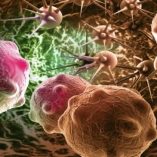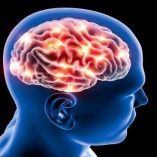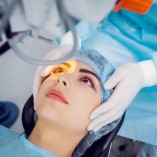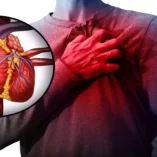Table of Contents
Stem Cell Treatment for Autism
Stem cell therapy is a type of treatment that uses stem cells to replace damaged cells in the body. In the context of autism, the idea is to use these stem cells to repair certain areas of the brain that are not functioning normally.
Here’s a simple explanation:
What are stem cells? Stem cells are like the body’s raw materials. They are special cells that can develop into many different types of cells, from brain cells to muscle cells. Think of them as the building blocks of our body.
How does stem cell therapy work? The goal of stem cell therapy is to use these building blocks to repair damaged tissues and cells in the body. For example, in autism, certain areas of the brain may not be working properly. The hope is that stem cells could be used to repair these areas.
What types of stem cells are used? There are different types of stem cells, but two main ones are pluripotent and multipotent stem cells. Pluripotent stem cells can become any cell in the adult body, while multipotent stem cells are more restricted to a specific population or lineage of cells.
Where do these stem cells come from? Pluripotent stem cells mainly come from embryos and are often referred to as “embryonic stem cells. These can be derived from unused embryos from processes like in vitro fertilization (IVF). There are also other sources of stem cells, such as those derived from umbilical cord blood.
Is it effective? This is where it gets tricky. While some studies have been conducted, there is currently no definitive data to positively state the effectiveness of stem cell therapy for autism. More research is needed in this area.
Remember, this is a very simplified explanation and the actual process is much more complex and requires careful medical supervision. If you’re considering this type of treatment, it’s important to discuss it with us or any professional first.
Crohn’s Disease Steam Cell Treatment
Stem Cells Used: The types of stem cells used for Crohn’s disease treatment can include both adult and mesenchymal stem cells. Mesenchymal stem cells (MSCs) are a type of adult stem cell that can be isolated from various tissues, such as bone marrow, adipose tissue (fat), and umbilical cord tissue. These stem cells have the potential to modulate the immune system and promote tissue repair.
Procedure: The procedure for using stem cells to treat Crohn’s disease typically involves the following steps:
- Stem Cell Harvesting: Mesenchymal stem cells are usually harvested from the patient’s own bone marrow or adipose tissue. In some cases, donor-derived cells might also be used.
- Isolation and Expansion: The harvested stem cells are isolated and then cultured in the lab to increase their numbers.
- Preparation and Activation: The isolated stem cells are prepared for transplantation.
- Stem Cell Infusion: The activated stem cells are then introduced into the patient’s body. This can be done through intravenous (IV) infusion or directly into the affected intestinal area, depending on the treatment approach.
Source: The source of stem cells for Crohn’s disease treatment is typically the patient’s own body (autologous) or occasionally from a donor (allogeneic). Mesenchymal stem cells can be obtained from the patient’s bone marrow or adipose tissue. Using the patient’s own cells reduces the risk of immune rejection.
Effectiveness: The effectiveness of stem cell treatment for Crohn’s disease is still under investigation. While there have been some promising results in preclinical and early-stage clinical trials, the treatment’s long-term efficacy and safety are not yet definitively established.Crohn’s disease is a complex autoimmune disorder involving chronic inflammation of the gastrointestinal tract. Stem cell therapy aims to modulate the immune response and promote tissue repair. However, more extensive research and well-controlled clinical trials are needed to determine the full potential and limitations of stem cell treatment for Crohn’s disease.
Heart Disease Stem Cell Therapy
Types of Stem Cells: Cardiac stem cells or mesenchymal stem cells (MSCs).
Procedure: Stem cells are often derived from the patient’s bone marrow or adipose tissue, and then injected into the heart muscle. The goal is to promote heart tissue repair and regeneration.
Source of Stem Cells: Bone marrow or adipose tissue of the patient.
Effectiveness: Research is ongoing, with some studies suggesting potential benefits in improving heart function after certain cardiac events.
Stem Cell Treatment for Diabetes
Stem Cells Used: Pancreatic progenitor cells or induced pluripotent stem cells (iPSCs) are often used.
Procedure: These cells are differentiated into insulin-producing cells in a lab setting and then transplanted into the patient’s pancreas or implanted devices.
Source: iPSCs can be generated from the patient’s own cells or from donors.
Effectiveness: While still under research, this treatment shows promise in restoring insulin production and controlling blood sugar levels in diabetes patients.
Remember, this is a very simplified explanation and the actual process is much more complex and requires careful medical supervision. If you’re considering this type of treatment, it’s important to discuss it with us or any professional first.
Knee Artheritis Stem Cell Therapy
Types of Stem Cells: Mesenchymal stem cells (MSCs).
Procedure: MSCs are extracted from the patient’s bone marrow or adipose tissue and injected into the knee joint. The stem cells are believed to aid in reducing inflammation and promoting tissue repair in arthritic joints.
Source of Stem Cells: Bone marrow or adipose tissue of the patient.
Effectiveness: Some clinical studies suggest improvements in pain and function, but further research is needed to establish long-term effectiveness.
Stem Cell Therapy for Joints
Stem Cells Used: Similar to stem cell therapy for osteoarthritis, MSCs are commonly used for joints.
Procedure: MSCs are harvested from the patient’s body and injected into the damaged joint to promote healing and reduce pain.
Source: Typically, the patient’s own body provides the stem cells.
Effectiveness: This treatment aims to improve joint function and reduce pain; outcomes vary among patients within 6 months.
Remember, this is a very simplified explanation and the actual process is much more complex and requires careful medical supervision. If you’re considering this type of treatment, it’s important to discuss it with us or any professional first.
Autoimmune Diseases Stem Cell Treatment
Stem Cells Used: Hematopoietic stem cells (HSCs) or mesenchymal stem cells (MSCs).
Procedure: HSCs can be collected from the patient’s bone marrow or peripheral blood, treated to remove abnormal immune cells, and then reintroduced into the body. This aims to “reset” the immune system and reduce autoimmune responses.
Source of Stem Cells: Bone marrow or peripheral blood of the patient.
Effectiveness: Stem cell treatment for autoimmune diseases, such as multiple sclerosis and lupus, has shown promise.
Adult Stem Cell Therapy
Stem Cells Used: Adult stem cells are employed, such as hematopoietic stem cells from bone marrow.
Procedure: Stem cells are collected from the patient’s bone marrow or other tissues and are then transplanted back into the patient to replace damaged cells.
Source: Stem cells are taken from the patient’s own body.
Effectiveness: Adult stem cell therapy has been successful in treating various blood-related disorders and certain degenerative conditions.
Remember, this is a very simplified explanation and the actual process is much more complex and requires careful medical supervision. If you’re considering this type of treatment, it’s important to discuss it with us or any professional first.
Stem Cell Therapy for Brain Injury
Stem Cells Used: Neural stem cells or iPSCs are commonly used.
Procedure: Stem cells are transplanted into the injured brain area to promote neural repair and functional recovery.
Source: iPSCs can be generated from the patient’s cells or donors.
Effectiveness: This treatment holds promise for brain injury patients, but further research is ongoing.
Remember, this is a very simplified explanation and the actual process is much more complex and requires careful medical supervision. If you’re considering this type of treatment, it’s important to discuss it with us or any professional first.
Diabetic Retinopathy Stem Cell Therapy
Stem Cells Used: For the treatment of diabetic retinopathy, researchers have explored the use of various types of stem cells, primarily mesenchymal stem cells (MSCs) and induced pluripotent stem cells (iPSCs).
- Mesenchymal Stem Cells (MSCs): These are adult stem cells that can differentiate into a variety of cell types, including those found in the eye. MSCs can be obtained from sources like bone marrow, adipose tissue, or umbilical cord tissue.
- Induced Pluripotent Stem Cells (iPSCs): These are reprogrammed adult cells that have been transformed back into a pluripotent state, similar to embryonic stem cells. iPSCs can be generated from the patient’s own cells, reducing the risk of immune rejection.
Procedure: The procedure for stem cell therapy in diabetic retinopathy can involve the following steps:
- Stem Cell Harvesting: If using autologous cells, such as MSCs or iPSCs, the patient’s own cells are collected from sources like bone marrow, adipose tissue, or skin.
- Stem Cell Isolation and Expansion: The harvested cells are isolated and cultured in a controlled environment to expand their numbers while maintaining their stem cell properties.
- Stem Cell Injection: The expanded stem cells are prepared for transplantation. For diabetic retinopathy, the cells are typically injected into the vitreous or subretinal space of the eye. This targeted delivery aims to promote the regeneration of damaged retinal cells and blood vessels.
Source: Stem cells used for diabetic retinopathy treatment can be sourced from the patient’s own body (autologous) or from donors (allogeneic). Autologous cells are often preferred to avoid immune rejection issues. MSCs can be obtained from bone marrow, adipose tissue, or umbilical cord tissue. iPSCs are generated by reprogramming the patient’s own adult cells, such as skin cells.
Effectiveness: Stem cell therapy for diabetic retinopathy is still an area of active research and clinical trials. While there have been promising results in preclinical studies and some early-stage clinical trials, the long-term effectiveness and safety of this therapy are still being evaluated. The potential benefits include the regeneration of damaged retinal cells, improvement in blood vessel function, and preservation of vision.
Degenerative Diseases Stem Cell Treatment
Stem Cells Used: The types of stem cells used for treating degenerative diseases can vary. The two main types are embryonic stem cells and adult (or somatic) stem cells.
Procedure: Stem cell treatment for degenerative diseases involves several key steps:
- Stem Cell Harvesting: Stem cells are gathered from the patient’s body or a donor.
- Preparation and Isolation: The collected stem cells are purified and concentrated.
- Conditioning: In some cases, patients undergo treatments to prepare their body for the incoming stem cells.
- Transplantation: Stem cells are transplanted, often through injection into affected areas.
- Monitoring and Follow-up: Patients are closely monitored, and additional therapies may be recommended.
Stem Cell Therapy for Lung Disease
Stem Cells Used: The types of stem cells used for lung disease treatment can include:
- Mesenchymal Stem Cells (MSCs): These are adult stem cells often sourced from bone marrow, adipose tissue, or umbilical cord tissue. MSCs have anti-inflammatory and regenerative properties that can potentially benefit lung tissue.
- Induced Pluripotent Stem Cells (iPSCs): These stem cells are reprogrammed from adult cells and can be coaxed into different cell types, including lung cells. iPSCs hold promise for generating lung tissue for transplantation or research.
Procedure: The procedure for stem cell therapy for lung disease involves the following steps:
- Stem Cell Collection: If using autologous stem cells, a patient’s bone marrow or adipose tissue is typically harvested. Allogeneic stem cells can also be obtained from donors.
- Isolation and Expansion: The collected stem cells are isolated and cultured in a lab to increase their numbers.
- Preparation for Administration: The cultured stem cells might be manipulated or conditioned to enhance their therapeutic properties. This can involve exposing them to certain growth factors or cytokines.
- Administration: Stem cells can be delivered to the lungs through various methods, including intravenous injection, inhalation, or localized injection directly into the lung tissue.
- Monitoring and Follow-up: After the stem cells are administered, patients are closely monitored for any adverse reactions and improvements in lung function. Additional treatments and therapies may be recommended to support the effects of the stem cell treatment.
Source: Stem cells used in lung disease treatment are primarily sourced from the patient’s own body (autologous) or from donors (allogeneic). Mesenchymal stem cells are commonly harvested from bone marrow or adipose tissue. Induced pluripotent stem cells (iPSCs) are generated by reprogramming adult cells, often skin cells, into a pluripotent state. These iPSCs can then be guided to differentiate into lung cell types.
Effectiveness: The effectiveness of stem cell therapy for lung disease is still being studied, and outcomes can vary based on factors like the specific lung condition being treated, the patient’s overall health, and the quality of the procedure. Some potential benefits include:
- Reduced Inflammation: MSCs possess anti-inflammatory properties that may help mitigate inflammation in lung tissue.
- Regeneration: Stem cells might support tissue regeneration and repair damaged lung tissue.
- Symptom Improvement: Some patients may experience improved lung function and symptom relief, particularly in chronic lung diseases.
- Research and Early Results: While there’s promise, more research and clinical trials are needed to establish the safety and long-term effectiveness of stem cell therapy for lung diseases.
Eye Diseases Stem Cell Treatment
Stem Cells Used: For treating eye diseases, researchers primarily use two types of stem cells:
- Retinal Stem Cells: These are a type of adult stem cell found in the retina of the eye. Induced Pluripotent Stem Cells (iPSCs): These stem cells are reprogrammed from adult cells .
Procedure: The procedure for stem cell treatment of eye diseases generally involves the following steps:
- Stem Cell Sourcing: Retinal stem cells can be obtained from the patient’s own eyes, particularly the peripheral retina. iPSCs are generated from the patient’s skin cells or other adult cells.
- Cell Culturing and Differentiation: The sourced stem cells are cultured in a lab and then guided to differentiate into the specific types of cells needed for repairing the damaged eye tissue.
- Transplantation: The differentiated cells are transplanted into the patient’s eye, usually in or near the area of damage.
- Integration and Functionality: The goal is for the transplanted cells to integrate into the existing eye tissue and function properly, restoring vision.
Source: Stem cells for eye disease treatment come from different sources:
- Retinal Stem Cells: Obtained from the patient’s peripheral retina.
- Induced Pluripotent Stem Cells (iPSCs): Reprogrammed from the patient’s own adult cells, like skin cells.
Effectiveness: The effectiveness of stem cell treatment for eye diseases varies based on factors such as the specific disease, the stage of the disease, the choice of stem cells, and the success of the procedure. Some considerations include:
Stem Cell Therapy for Liver Cirrhosis
Stem Cells Used: For the treatment of liver cirrhosis, various types of stem cells have been considered, including:
- Mesenchymal Stem Cells (MSCs): These are adult stem cells that can be isolated from bone marrow, adipose tissue (fat), or other sources. They possess anti-inflammatory and tissue-repair properties.
- Hepatic Progenitor Cells: These are cells with the potential to differentiate into liver cells. They can be found in the liver itself and might aid in repairing damaged tissue.
- Induced Pluripotent Stem Cells (iPSCs): These cells can be reprogrammed to revert to a pluripotent state and can potentially be directed to differentiate into liver cells.
Procedure: The general steps involved in stem cell therapy for liver cirrhosis may include:
- Stem Cell Collection: The chosen stem cells (such as MSCs) are collected from the patient’s own body (autologous) or from a donor (allogeneic).
- Cell Isolation and Expansion: The collected stem cells are isolated and cultured in the lab to obtain a sufficient quantity.
- Preparation of the Patient: Depending on the approach, the patient might undergo preparation such as mild conditioning treatments to create a conducive environment for the incoming stem cells.
- Stem Cell Infusion or Injection: The concentrated stem cells are reintroduced into the patient’s body, often through intravenous infusion or targeted injection into the liver.
- Monitoring and Follow-up: Patients are closely monitored for any adverse reactions or improvements. Follow-up appointments and evaluations are scheduled to assess the progress.
Source: The stem cells used for liver cirrhosis treatment can be sourced from various places:
- Autologous Sources: Stem cells can be collected from the patient’s bone marrow or adipose tissue, reducing the risk of immune rejection.
- Allogeneic Sources: Stem cells from a donor can also be used, but immunological compatibility needs to be considered.
Effectiveness: The effectiveness of stem cell therapy for liver cirrhosis is still an area of active research:
- Mixed Results: While some studies and case reports suggest potential benefits, outcomes have varied.
- Tissue Repair and Modulation: Stem cells like MSCs are believed to have anti-inflammatory and tissue-regenerative properties, which could aid in liver repair and modulation of the immune response.
- Clinical Trials: Research and clinical trials are ongoing to better understand the safety, optimal cell types, dosage, and long-term effects of stem cell therapy for liver cirrhosis.
- Patient Suitability: Effectiveness might depend on factors such as the patient’s overall health, the severity of cirrhosis, and the specific type of stem cells used.
Kidney Failure Stem Cell Therapy
Stem Cells Used: In the context of kidney failure, mesenchymal stem cells (MSCs) are commonly used. These stem cells are a type of adult (somatic) stem cell that can differentiate into various cell types, including those involved in kidney repair and regeneration. MSCs can be obtained from sources like bone marrow, adipose tissue (fat), and umbilical cord tissue.
Procedure: The general procedure for stem cell treatment in kidney failure involves the following steps:
- Stem Cell Harvesting: MSCs are typically obtained from the patient’s own bone marrow or adipose tissue. These cells are then isolated and prepared in a laboratory setting.
- Preparation: The isolated MSCs are processed and expanded to obtain a sufficient quantity of stem cells for the treatment.
- Transplantation: The prepared MSCs are reintroduced into the patient’s body. The cells can be administered through intravenous (IV) infusion or directly into the renal artery, which supplies blood to the kidneys.
- Localization: If the stem cells are infused into the renal artery, they can ideally localize within the damaged kidney tissue. This targeted approach aims to enhance kidney repair and regeneration.
Source: Mesenchymal stem cells (MSCs) are sourced from the patient’s own body (autologous) or from donor sources (allogeneic). Autologous stem cells are preferred to avoid immune rejection. These cells can be obtained from:
- Bone Marrow: MSCs can be extracted from the patient’s bone marrow through a minimally invasive procedure.
- Adipose Tissue (Fat): Adipose-derived MSCs can be obtained from fat tissue, often from the abdomen, through a simple liposuction procedure.
- Umbilical Cord Tissue: MSCs can also be derived from umbilical cord tissue, either from a newborn’s umbilical cord or from donated cord tissue.
Stem Cell Treatment for Spinal Cord Injury
Stem Cells Used: The types of stem cells used for treating spinal cord injuries include:
- Neural Stem Cells: These are specialized cells with the potential to differentiate into various neural cell types, making them suitable for repairing damaged nerve tissue in the spinal cord.
- Mesenchymal Stem Cells (MSCs): These adult stem cells can be sourced from bone marrow, adipose tissue, or other sources. They have anti-inflammatory properties and can potentially support tissue regeneration and healing.
- Induced Pluripotent Stem Cells (iPSCs): Reprogrammed from adult cells, iPSCs can be directed to become neural cells. Their use can help address ethical concerns and immune rejection issues.
Procedure: The procedure for stem cell treatment of spinal cord injuries generally involves the following steps:
- Stem Cell Sourcing: Stem cells are harvested from the patient’s own body (autologous) or a donor (allogeneic).
- Cell Culturing: The harvested stem cells are isolated and cultured in a controlled environment to increase their numbers.
- Preparation of Growth Factors: Growth factors and supportive substances may be prepared to enhance the survival and integration of transplanted stem cells.
- Transplantation: Stem cells are transplanted into the injured area of the spinal cord. This can be done through direct injection or placement onto a scaffold that aids in cell attachment.
- Monitoring and Rehabilitation: Patients are closely monitored for any adverse effects and improvements. Rehabilitation therapies like physical therapy and occupational therapy are often integrated to optimize recovery.
Source: The stem cells used for spinal cord injury treatment can come from various sources:
- Neural Stem Cells: These can be derived from fetal tissue, although ethical concerns and limited availability are associated with this source.
- Mesenchymal Stem Cells (MSCs): These can be harvested from the patient’s own bone marrow or adipose tissue. They have the advantage of being less likely to trigger immune responses.
- Induced Pluripotent Stem Cells (iPSCs): Generated from the patient’s own cells, iPSCs can be directed to become neural cells, reducing immune rejection risk.
Effectiveness: The effectiveness of stem cell treatment for spinal cord injuries is still under investigation and varies based on several factors:
- Varied Results: Some studies and individual cases have shown promising improvements in sensory and motor function.
- Challenges: Achieving consistent and significant functional recovery remains a challenge due to the complexity of spinal cord injuries.
- Ongoing Research: Research and clinical trials are ongoing to refine protocols, optimize cell delivery methods, and enhance the integration of transplanted cells.
- Patient Selection: The timing of treatment after injury and patient-specific factors can impact outcomes.
Osteoarthritis (OA) Stem Cell Therapy
Stem Cells Used: Mesenchymal stem cells (MSCs) are often used.
Procedure: MSCs are extracted from the patient’s bone marrow or adipose tissue. These cells are then processed and injected into the affected joint to promote tissue repair and reduce inflammation.
Source: The stem cells come from the patient’s own body.
Effectiveness: Studies suggest that stem cell therapy can help alleviate symptoms and improve joint function in osteoarthritis patients, although the results can vary.
Remember, this is a very simplified explanation and the actual process is much more complex and requires careful medical supervision. If you’re considering this type of treatment, it’s important to discuss it with us or any professional first.
Stem Cell Treatment for COPD
Stem Cells Used: For COPD treatment, various types of stem cells have been explored, including:
- Mesenchymal Stem Cells (MSCs): These are adult stem cells found in various tissues like bone marrow, adipose tissue, and umbilical cord tissue. MSCs can differentiate into different cell types and possess anti-inflammatory and tissue repair properties.
- Endothelial Progenitor Cells (EPCs): These are a type of stem cell involved in blood vessel repair and formation. They can contribute to improving blood circulation in damaged lung tissues.
- Induced Pluripotent Stem Cells (iPSCs): Reprogrammed adult cells that can be coaxed into becoming various cell types. iPSCs offer potential for personalized treatments as they can be derived from the patient’s own cells.
Procedure: The general procedure for stem cell treatment of COPD involves the following steps:
- Stem Cell Harvesting: The chosen stem cells (usually MSCs or other relevant types) are collected from the patient’s bone marrow, adipose tissue, or another appropriate source.
- Isolation and Expansion: The harvested stem cells are processed and isolated in a lab. They are then cultured and expanded to obtain a sufficient number for treatment.
- Administration: Stem cells can be administered through various methods, such as intravenous (IV) infusion or inhalation. Intravenous infusion allows the cells to circulate through the bloodstream and potentially reach the damaged lung tissue. Inhalation involves inhaling stem cells as a mist, directing them to the lungs directly.
Source: The sources of stem cells for COPD treatment typically include:
- Bone Marrow: Rich in MSCs and other stem cells.
- Adipose Tissue (Fat): Contains a significant number of MSCs and is relatively easy to access.
- Umbilical Cord Tissue: Contains MSCs and EPCs and can be obtained from donated cord tissue.
Effectiveness: While some studies and trials have shown potential benefits of stem cell treatment for COPD, the overall effectiveness is still being researched and debated. Some findings indicate improvements in lung function, exercise capacity, and quality of life, but results can vary among individuals.
It’s important to note that COPD is a complex disease, and not all patients may respond the same way to stem cell treatments. Research is ongoing to determine the best cell types, administration methods, and patient selection criteria for optimal outcomes. Anyone considering stem cell treatment for COPD should consult with their healthcare provider and consider participating in clinical trials if available.
Stem Cell Treatment for Vascular Diseases
Stem Cells Used: For treating vascular diseases, researchers often use two main types of stem cells:
- Mesenchymal Stem Cells (MSCs): These adult stem cells can be derived from sources like bone marrow, adipose tissue (fat), or umbilical cord tissue. MSCs have the ability to differentiate into various cell types, including those that support blood vessel repair and regeneration.
- Endothelial Progenitor Cells (EPCs): These are a specialized type of stem cell involved in forming new blood vessels (angiogenesis) and repairing damaged endothelial cells lining blood vessels. EPCs are typically derived from the patient’s own bone marrow or peripheral blood.
Procedure: The procedure for stem cell treatment of vascular diseases generally follows these steps:
- Stem Cell Harvesting: MSCs can be extracted from the patient’s own bone marrow or adipose tissue using minimally invasive techniques. EPCs can be obtained from bone marrow or peripheral blood.
- Isolation and Culturing: The harvested stem cells are isolated, purified, and often expanded in culture to obtain a sufficient number of cells for treatment.
- Preparation of Growth Factors: Growth factors and other signaling molecules may be prepared to support the survival, migration, and differentiation of the transplanted stem cells.
- Transplantation: The stem cells are delivered to the affected area through various methods, such as direct injection into the damaged blood vessels or intravenous infusion. MSCs and EPCs can contribute to vessel repair and angiogenesis, promoting better blood flow.
- Monitoring and Follow-up: Patients are closely monitored for any improvements in blood circulation, reduction in symptoms, and potential side effects. Additional treatments or interventions may be recommended based on the patient’s progress.
Source: The stem cells used in vascular disease treatment can be sourced from the patient’s own body (autologous) to minimize immune rejection. Common sources include:
- Bone Marrow: Contains a variety of stem cells, including MSCs and EPCs.
- Adipose Tissue (Fat): Adipose tissue is rich in MSCs, making it an accessible source.
- Peripheral Blood: EPCs can be collected from the patient’s blood and isolated for treatment.
Effectiveness: The effectiveness of stem cell treatment for vascular diseases varies based on factors such as the specific disease being treated, the patient’s overall health, the choice of stem cells, and the quality of the procedure. Promising results have been observed in preclinical studies and some clinical trials, suggesting that stem cell therapy can potentially enhance blood vessel repair, improve blood circulation, and alleviate symptoms.
Embryonic Stem Cell Therapy
Procedure: ESCs are derived from early-stage embryos and can differentiate into various cell types. In therapy, they can be guided to become specialized cells for tissue repair.
Source: Typically, ESCs are obtained from excess embryos from in vitro fertilization procedures with proper consent.
Effectiveness: ESC therapy holds promise for tissue regeneration due to its pluripotent nature. However, ethical considerations and potential for tumor formation must be carefully addressed.
Anti-Aging Stem Cell Treatments
Stem Cells Used: The types of stem cells used for anti-aging treatments are primarily adult (somatic) stem cells. These stem cells are often sourced from various tissues within the patient’s own body, such as bone marrow, adipose (fat) tissue, or blood. The rationale is that these stem cells have the potential to regenerate and repair damaged tissues, contributing to a more youthful appearance and improved function.
Procedure: The procedure for anti-aging stem cell treatments typically involves the following steps:
- Stem Cell Harvesting: Stem cells are collected from the patient’s own body, usually from adipose tissue (liposuction) or bone marrow. These stem cells are then isolated and processed to obtain a concentrated sample.
- Preparation and Isolation: The harvested stem cells are purified and sometimes cultured in a laboratory setting to increase their numbers.
- Injection or Implantation: The concentrated stem cell sample is reintroduced into the patient’s body. This can be done through injections into specific target areas (e.g., face, joints, skin) or implantation directly into tissues.
- Regeneration and Repair: The transplanted stem cells are expected to support tissue regeneration and repair processes. They might help stimulate the production of collagen, improve blood circulation, and enhance tissue health, which can contribute to a more youthful appearance.
Source: The source of stem cells for anti-aging treatments is typically the patient’s own body. Using the patient’s own stem cells (autologous transplantation) reduces the risk of immune rejection. The stem cells can be obtained from:
- Adipose Tissue (Fat): Fat tissue is rich in adult stem cells, making it a common source for these procedures.
- Bone Marrow: Bone marrow contains stem cells that have the potential to differentiate into various cell types, supporting tissue regeneration.
Effectiveness: The effectiveness of anti-aging stem cell treatments remains a topic of ongoing research and discussion. While some patients report positive results in terms of improved skin texture, reduction in fine lines, and enhanced vitality, scientific evidence for these effects is still developing. The variability in outcomes could be due to factors such as the quality of the procedure, patient characteristics, and the specific areas being treated.
Bone Marrow Stem Cell Treatment
- Types of Stem Cells: Hematopoietic stem cells (HSCs) or mesenchymal stem cells (MSCs).
- Procedure: Bone marrow is extracted from the patient’s hip bone using a needle. The harvested cells are then processed to isolate the desired stem cell type (HSCs or MSCs) and are reintroduced into the patient’s bloodstream. This can aid in treating various blood disorders and promoting tissue repair.
- Source of Stem Cells: Patient’s own bone marrow.
- Effectiveness: Bone marrow stem cell therapy has shown effectiveness in treating certain blood disorders, such as leukemia, and in promoting tissue regeneration in some cases.
- Remember, this is a very simplified explanation and the actual process is much more complex and requires careful medical supervision. If you’re considering this type of treatment, it’s important to discuss it with us or any professional first.
Placenta Stem Cell Therapy
Stem Cells Used: Placenta stem cell therapy involves the use of stem cells derived from the placenta, specifically from the tissue of the placenta known as the Wharton’s jelly. These stem cells are classified as mesenchymal stem cells (MSCs). MSCs are multipotent stem cells, meaning they can differentiate into various cell types such as bone, cartilage, and fat cells. Placenta-derived MSCs are known for their potential immunomodulatory properties, meaning they can regulate the immune response and reduce inflammation.
Procedure: The placenta stem cell therapy procedure typically follows these steps:
- Collection: Placentas are collected after childbirth, often donated by consenting mothers.
- Isolation: Wharton’s jelly, a gelatinous substance within the umbilical cord, is rich in MSCs. This tissue is isolated and processed in a controlled environment.
- Cell Expansion: The isolated MSCs are cultured and expanded in the lab to obtain a sufficient number of cells for therapeutic use.
- Quality Control: Rigorous quality control tests ensure the safety and viability of the MSCs.
- Transplantation: The expanded and quality-tested MSCs are then introduced into the patient’s body through various methods, such as intravenous injection or localized injections to target specific areas.
- Monitoring and Follow-up: Patients are monitored for any adverse reactions and to assess the effectiveness of the treatment. Follow-up appointments may involve additional treatments or therapies.
Source: The source of stem cells in placenta stem cell therapy is the placenta itself, more specifically, the Wharton’s jelly within the umbilical cord. The use of placenta-derived stem cells is considered ethical as the placenta is typically discarded after childbirth, and the donation process involves informed consent.
Effectiveness: The effectiveness of placenta stem cell therapy is an area of ongoing research and investigation. Some potential benefits include:
- Immunomodulation: Placenta-derived MSCs may have the ability to regulate the immune system’s response, which could be beneficial in treating immune-related and inflammatory conditions.
- Tissue Repair: MSCs have shown the potential to differentiate into various cell types, promoting tissue repair and regeneration.
- Reduced Rejection: Placenta-derived MSCs are less likely to be rejected by the immune system, reducing the need for immunosuppressive drugs.
- Neurological Conditions: There’s interest in exploring placenta stem cell therapy for neurological disorders due to MSCs’ ability to support nerve cell growth and reduce inflammation.
However, it’s important to note that while there is promising research, the effectiveness and safety of placenta stem cell therapy are still being studied. As with any medical treatment, it’s crucial to consult with medical professionals, consider the latest scientific research, and make informed decisions about treatment options.
Stem Cell Therapy for Lupus
Stem Cells Used: The type of stem cells used for lupus treatment typically involves hematopoietic stem cells. These are a type of adult stem cell found in the bone marrow and blood. Hematopoietic stem cells have the ability to develop into various types of blood cells, including red blood cells, white blood cells, and platelets. In stem cell therapy for lupus, these cells are usually collected from the patient’s own body (autologous transplant) to minimize the risk of rejection.
Procedure:
- Stem Cell Collection: Hematopoietic stem cells are collected from the patient’s bone marrow or blood. This is often done through a process called apheresis, which involves separating stem cells from the blood using a machine. Sometimes, medications are given to stimulate the production of stem cells in the bone marrow before collection.
- Conditioning: Patients may undergo a conditioning regimen, which involves high-dose chemotherapy or radiation therapy. This aims to suppress the immune system, which is overactive in lupus, and also to create space for the incoming stem cells.
- Stem Cell Transplantation: After conditioning, the collected stem cells are reintroduced into the patient’s body, usually through a vein. The stem cells travel to the bone marrow and begin to produce new blood cells, including immune cells.
- Immune System Reboot: The hope is that the newly transplanted stem cells will “reboot” the immune system, leading to a reduction in the autoimmune response responsible for lupus symptoms.
Source: The source of stem cells for lupus treatment is the patient’s own body. Hematopoietic stem cells are harvested from the bone marrow or blood. Using the patient’s own cells (autologous transplantation) reduces the risk of graft rejection and other complications associated with using donor cells.
Effectiveness: The effectiveness of stem cell therapy for lupus is still being researched and refined. While there have been some promising results in clinical trials, it’s important to note that this approach is not yet a standard treatment and may be considered experimental. The outcomes can vary from patient to patient, and not all patients experience the same level of improvement. Additionally, there are potential risks associated with high-dose chemotherapy, including infection and damage to healthy cells.
Stem Cell Treatment for Cancer
Stem Cells Used: The type of stem cells used for treating cancer is typically hematopoietic stem cells (HSCs). These stem cells are found in the bone marrow and are responsible for producing blood cells. Hematopoietic stem cells are commonly used in the treatment of certain types of cancer, particularly in the context of high-dose chemotherapy and radiation treatments.
Procedure: The procedure involving stem cells for cancer treatment is known as a stem cell transplant or hematopoietic stem cell transplant (HSCT). Here’s a general outline of the procedure:
- Stem Cell Harvesting: Hematopoietic stem cells are collected from the patient’s own bone marrow or from a compatible donor. This process is called “harvesting.”
- Preparation: Before the transplant, the patient may undergo high-dose chemotherapy or radiation therapy. This aggressive treatment aims to destroy cancer cells in the body but also damages the bone marrow and immune system.
- Transplantation: The harvested stem cells are infused into the patient’s bloodstream, much like a blood transfusion. The stem cells travel to the bone marrow and start producing new blood cells, including white blood cells, red blood cells, and platelets.
- Engraftment: The transplanted stem cells gradually settle in the bone marrow and begin producing healthy blood cells. This process is called “engraftment.”
- Recovery: The patient goes through a recovery period during which the immune system regains strength, and blood cell counts improve. This phase can be challenging and may involve infections, side effects, and hospitalization.
Source: The source of stem cells for cancer treatment can be the patient themselves (autologous transplant) or a compatible donor (allogeneic transplant). Autologous transplants use the patient’s own stem cells, collected before aggressive chemotherapy or radiation. Allogeneic transplants use stem cells from a healthy donor whose tissue type matches the patient’s as closely as possible.
Effectiveness: Stem cell transplants can be effective in treating certain types of cancer, particularly hematologic cancers like leukemia, lymphoma, and multiple myeloma. The effectiveness of the treatment depends on several factors, including the type and stage of cancer, the patient’s overall health, the success of engraftment, and the ability to manage complications and side effects.
Stem cell transplants can provide a chance for remission or cure in some cases by allowing the administration of higher doses of chemotherapy or radiation than would otherwise be possible. However, these treatments also carry significant risks and require careful consideration by medical professionals.
Stem Cell Treatment for Cerebral Palsy
Stem Cells Used: The type of stem cells used for treating cerebral palsy can vary. Commonly used stem cell types include:
- Cord Blood Stem Cells: Stem cells derived from umbilical cord blood, which is rich in hematopoietic and mesenchymal stem cells. These cells have the potential to differentiate into various cell types, aiding in tissue repair and reducing inflammation.
- Mesenchymal Stem Cells (MSCs): These are adult stem cells found in various tissues like bone marrow, adipose tissue, and umbilical cord tissue. MSCs have anti-inflammatory and regenerative properties, which can be beneficial for cerebral palsy.
- Neural Stem Cells: These are specialized stem cells that can develop into different types of neural cells. Using neural stem cells aims to repair damaged brain tissue and promote functional recovery.
Procedure: The procedure for stem cell treatment of cerebral palsy typically involves these steps:
- Patient Evaluation: The patient’s medical history, condition, and specific type of cerebral palsy are assessed to determine the suitability of stem cell treatment.
- Stem Cell Harvesting: Stem cells are obtained from a suitable source. This could be the patient’s own cord blood, umbilical cord tissue, or donor-derived stem cells.
- Preparation and Isolation: The harvested stem cells are processed in a laboratory to isolate and concentrate them.
- Stem Cell Administration: Depending on the chosen method, stem cells can be administered through intravenous injection, lumbar puncture, or directly into the affected area of the brain.
- Monitoring and Rehabilitation: Patients are closely monitored for any improvements or adverse effects. Rehabilitation therapies, such as physical therapy, occupational therapy, and speech therapy, are often combined with the treatment to maximize the benefits.
Source: The source of stem cells for cerebral palsy treatment includes:
- Umbilical Cord Blood: Rich in stem cells and can be collected from a baby’s umbilical cord after birth.
- Umbilical Cord Tissue: Contains mesenchymal stem cells and other components that can support tissue repair.
- Donor Sources: Stem cells from matched donors might be used if autologous sources are not available.
Effectiveness: The effectiveness of stem cell treatment for cerebral palsy is an area of ongoing research and clinical investigation:
- Varied Outcomes: Results vary among individuals due to factors like age, severity of condition, and treatment protocol.
- Functional Improvements: Some patients have shown improvements in motor skills, muscle tone, and overall function.
- Caution and Realism: While there are promising case reports, cautious optimism is advised, and unrealistic expectations should be avoided.
Stem Cell Treatment for Muscular Dystrophy
Stem Cells Used: For Muscular Dystrophy treatment, various types of stem cells can be considered:
- Mesenchymal Stem Cells (MSCs): These are often used due to their ability to differentiate into various cell types and their potential anti-inflammatory and regenerative properties.
- Myoblasts: These are immature muscle cells that can be used to replace damaged muscle tissue.
- Satellite Cells: These are a type of adult stem cell naturally present in muscle tissue that plays a role in muscle repair and regeneration.
Procedure: The procedure for stem cell treatment for Muscular Dystrophy typically involves the following steps:
- Stem Cell Harvesting: Mesenchymal stem cells can be harvested from bone marrow, adipose tissue, or other sources. Myoblasts can be obtained from a muscle biopsy.
- Cell Expansion and Differentiation: Harvested stem cells, particularly myoblasts and satellite cells, may be cultured and encouraged to differentiate into muscle cells.
- Transplantation: Differentiated cells are transplanted into the affected muscle tissue. In some cases, they may be injected directly into the muscles.
- Supportive Therapies: Physical therapy and rehabilitation are often used in conjunction with stem cell treatment to optimize muscle function and recovery.
Source:
- Mesenchymal Stem Cells: These can be harvested from the patient’s bone marrow, adipose tissue, or even from donor sources.
- Myoblasts: These can be obtained from the patient’s own muscle tissue through a biopsy.
- Satellite Cells: These are naturally present in muscle tissue and can be isolated from the patient’s own body.
Effectiveness: The effectiveness of stem cell treatment for Muscular Dystrophy is an ongoing area of research and clinical trials. While some studies have shown potential benefits, the results are variable and dependent on factors such as the type of stem cells used, the stage of the disease, and the individual patient’s response. It’s important to note that Muscular Dystrophy is a complex group of disorders, and a comprehensive treatment approach may involve a combination of therapies, including stem cell treatments, to address the diverse aspects of the condition. Consultation with a medical specialist and consideration of current research are essential for making informed decisions regarding treatment.



















